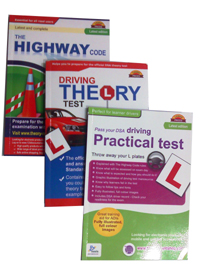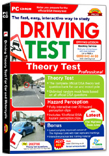People get nervous about taking their test because:
Self-doubts and lack of confidence in your driving
Pressure from friends/family
Lack of preparation
Fear of failure
Previous test failure
Things to remember while appearing for the test:
Before appearing for the test at least once have a mock driving test with your instructor.
Avoid listening to 'failure stories'. This would make you more nervous. Just focus on your performance.
- Practice and practice and practice - The main reason of failure in a test is lack of preparation and practice. So don't rush into taking your driving theory test unless and until you're properly prepared and confident about your preparation.
- Think positive about your driving test. Thinking can build an actual difference to overcoming driving test nerves
- Don't take medicines to calm your nerves.
- It's ok if you make mistake - Your mistake could be minor driving fault, wont necessary fail you in test. If you make a mistake, keep calm and focus on your driving.
- Don't panic - Say to yourself in your head 'I CAN do this test'.
- Believe in yourself - Be confident in your own abilities.
- One day before your test get a good rest.
- Taking test in the early morning will give you less time to worry about it.
- Revise in mind - Perform coordinated tasks by imagining doing them, by practicing in your head.
- Don't drink too much coffee, tea and fizzy drinks; the caffeine will 'hype' you and make your thinking less clear.
- Do not spread the news - Don't tell your friends and other people that you've booked your driving test. This will build the extra stress of trying to live up to your friends and others expectations. Letting your parents know will do as they will give you all the support you want.
- Perspective - Overall, remember that although exams are important, they are not the be all and end all. You can always re-take the test.
Tips for the preparation of Driving Test:
1. Take advice from your driving instructor regarding when to sit your test, S/he could advise you when you are actually ready for the test
2. You can book your driving test well in advance, so you choose from convenient time slot from the nearest test centre.
3. Select the time slot when you could be at your best. Your bad day could affect your test at the evening time. Mornings are usually the best as you are more relaxed and focused.
4. Make sure you have the important documents with you and arrive in well in time at the test center.
5. Your theory test is computer based; you need not be an expert at using computers. But make sure you understand how the touch screen works. You can also work through a practice session for up to 15 minutes to get used to the system before actually starting their test. Make use of this time.
6. Think positively. Don't be nervous, the questions will be exactly same as you practiced (if you have referred correct material)
7. Read each question carefully and note how many answers are required.
8. Stays calm - Answer the easy questions first, if you are not sure about any of the answers, flag them and you can come back to them later.
9. When you think you've finished check through all your answers again.
2. You can book your driving test well in advance, so you choose from convenient time slot from the nearest test centre.
3. Select the time slot when you could be at your best. Your bad day could affect your test at the evening time. Mornings are usually the best as you are more relaxed and focused.
4. Make sure you have the important documents with you and arrive in well in time at the test center.
5. Your theory test is computer based; you need not be an expert at using computers. But make sure you understand how the touch screen works. You can also work through a practice session for up to 15 minutes to get used to the system before actually starting their test. Make use of this time.
6. Think positively. Don't be nervous, the questions will be exactly same as you practiced (if you have referred correct material)
7. Read each question carefully and note how many answers are required.
8. Stays calm - Answer the easy questions first, if you are not sure about any of the answers, flag them and you can come back to them later.
9. When you think you've finished check through all your answers again.











